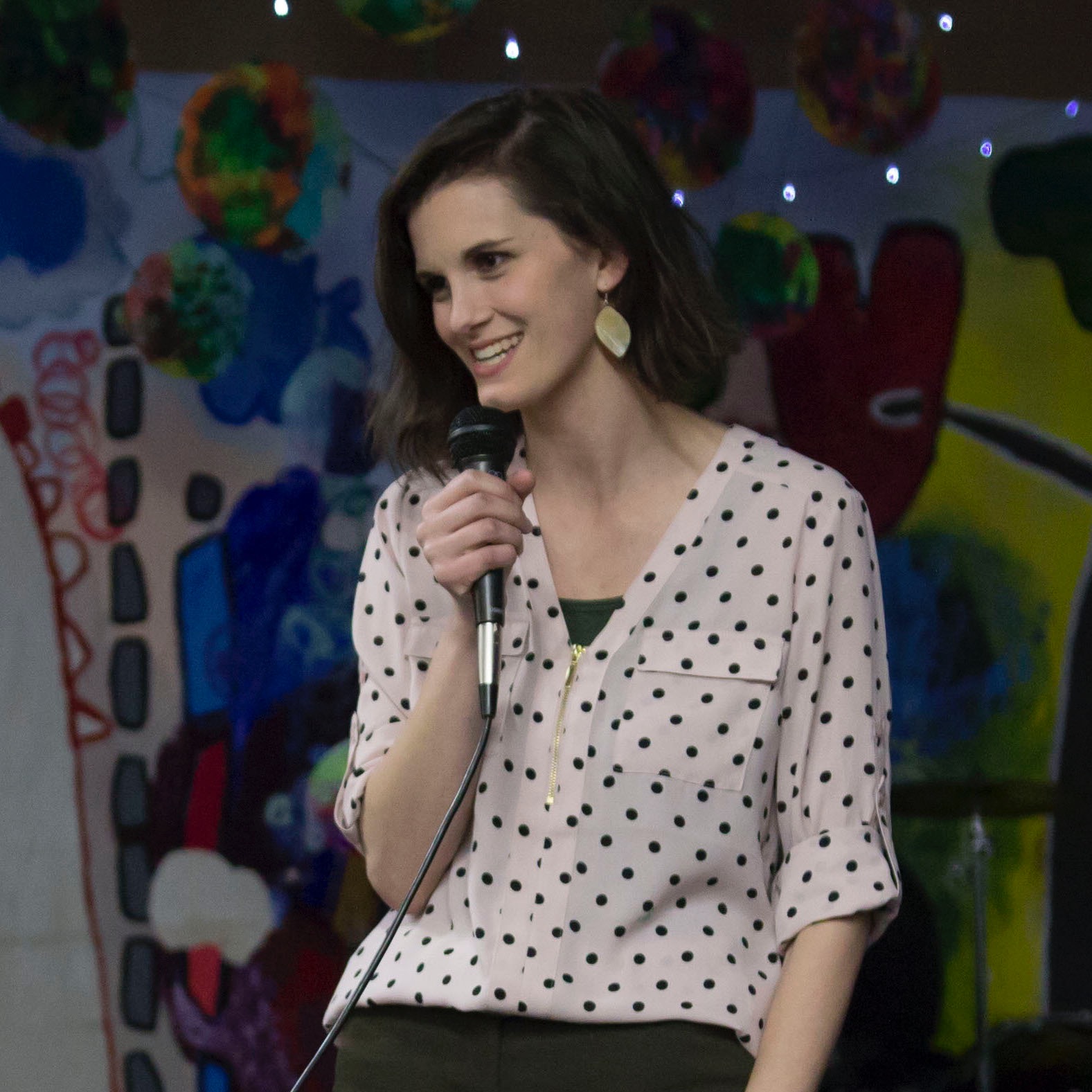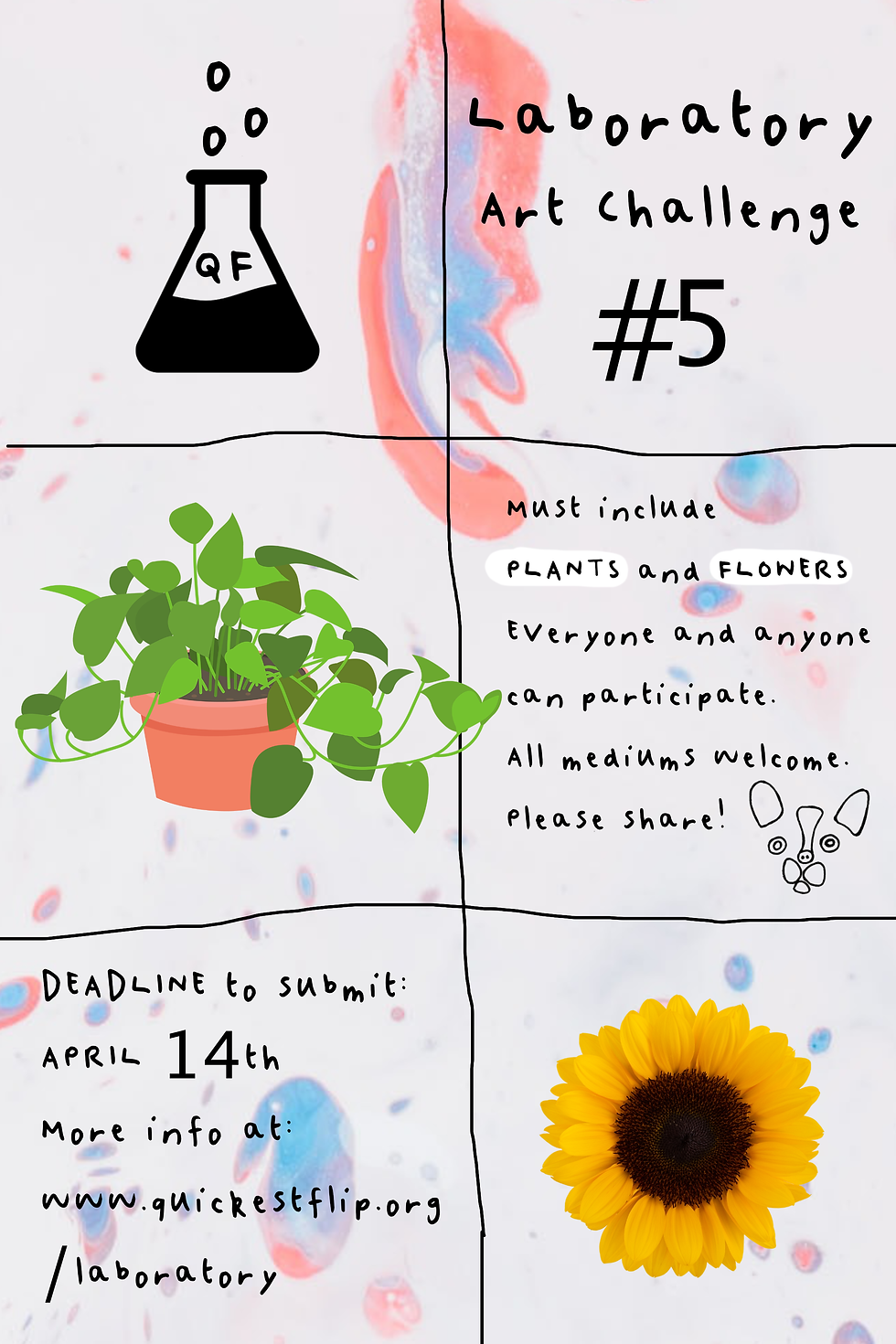Quickest Flip: a Project and Magazine for Inclusivity in the Arts
- Sydney Davis-Campos

- Apr 28, 2023
- 6 min read
Updated: May 24, 2023
Quickest Flip is a magazine and showcase focused on inclusivity in the arts. Jamie Walsh, founder and co-facilitator, and Ross Shuber, co-facilitator, share the vision and inspiration for Quickest Flip as well as some insight into their creative process.

What is Quickest Flip?
Jamie: Quickest Flip is a small arts organization that features an ongoing curation of artwork by artists with and without disabilities. We partner with progressive art studios (art programs/studios that work directly with artists with developmental and intellectual disabilities) across the country and feature artwork made at these studios alongside artwork by other contemporary artists. Artists with and without disabilities are featured in our print magazine, Quickest Flip Magazine, where we promote inclusion in the arts by showcasing visual art, writing, artist features, progressive art studio highlights, and interviews with creative people doing creative things.
ROSS: We also curate exhibitions on our website’s homepage gallery that rotate every two months (quickestflip.org) and post artwork regularly on our Instagram and Facebook pages. And we host fun art challenges!
How did Quickest Flip start?
JAMIE: I started thinking up Quickest Flip in 2011. At that time, I had worked for several progressive art studios in California as an art instructor and gallery curator. I noticed that there were few opportunities (through representation and exhibitions) for artists with developmental disabilities to participate in the art world, and fewer that are inclusive, meaning they feature artwork by artists both with and without disabilities. Many art programs that support artists with disabilities have their own on-site galleries featuring artwork made through their own programs. Though these galleries provide exhibition space and a means for income from art sales, they also represent the artists in the context of "artwork by artists with disabilities". I thought it could be beneficial for the artists, the public, and communities to see this work further integrated into the local arts scene. Quickest Flip advocates for the representation of artists with disabilities in inclusive settings, and allows the artwork to be seen within a greater arts and culture context. I started creating the magazine shortly after and published the first 6 issues while in grad school.
Where did the name “Quickest Flip” come from?
JAMIE: Ha, that’s a good question! No one really asks that and I always wonder what people think about it. The name originated long ago, way before I even thought of Quickest Flip existing. Do you remember LiveJournal? It was social media before MySpace. My friend had posted on LiveJournal a list of made-up band names for every letter of the alphabet and for “Q” they wrote “Quickest Flip”. At the time I thought it was really funny and it always stuck with me. In 2011 I decided to use it for this project, with no real reason other than I liked how it sounded. I’ve come to really appreciate it even more over the years and feel that it encompasses the spirit of our mission. It’s fun and joyful sounding, but it also promotes a sense of action, urgency, and progress. I think this combination is perfect for what we’re doing.

What is Quickest Flip’s mission?
ROSS: Quickest Flip’s mission is to highlight the overlooked intersection between artwork made by artists at progressive art studios and the mainstream contemporary art world. We hope that some folks who come across Quickest Flip are introduced to the artwork being made by artists with developmental disabilities and begin to see this work as a crucial part of contemporary art in general.
JAMIE: Historically, people with developmental disabilities have been segregated and stigmatized within their local communities and, specifically, within the art world. We’ve coined the hashtag #outsiderbutwhy, as a response to the Outsider Art market, a category of artwork that artists with disabilities automatically fall into. It’s been awesome to see how much things really have progressed since starting Quickest Flip in 2011, there are more galleries including artwork made at progressive art studios and more studios are evolving and moving things forward in regard to how artists with disabilities are represented and included. We’re excited to be part of this momentum and to be creating a new type of art publication that has never existed before.
What is your artwork or artist selection process?
JAMIE: Right now, we select artwork by artists with disabilities at studios we partner with. To date, we partner with 30 studios across the country (we list our partners on the Directory page of our website). We’re excited to expand this list through the year and are in the process of conducting outreach. We try to pull artwork that is listed for sale on the studio's websites, in the event that someone sees the work and is interested in purchasing it. Instagram has also been such a helpful resource for finding artists across the country and finding out about cool art galleries for emerging artists. I’d say our curation is very much swayed by my own personal taste as I am drawn to certain styles that I find fun or interesting or creative in a way that makes me happy. I suppose every curator makes selections through their own personal taste to some extent. At some point, I could see opening up more to submitted contributions but as we’re just now starting back up we’ve been doing the selection and outreach ourselves.

What is the Laboratory?
ROSS: The Quickest Flip Laboratory is a fun series of themed art challenges that prompt participants to use a set of common ingredients to create an art piece. There is usually a color theme and topic. For example, these were the prompts so far: Green + 3 lines, Yellow + TV Shows, Blue + City Life, and Red + Restaurants/Dishes. Anyone and everyone is encouraged to submit their artwork, and all the submissions are compiled and displayed as a collection (and archived) on our website. Stay tuned for the next Lab by following the Quickest Flip socials!
What is Quickest Flip’s vision for the future?
JAMIE: We’re excited to grow our partnerships and to publish more issues of Quickest Flip Magazine. We’d love to expand our distribution of the magazine, both within progressive art studio galleries and cool independent art spaces, shops, and bookstores. We’re currently a two-person volunteer-run organization, and we both have full-time jobs, so we try to keep things manageable while also focusing on growth and creating the positive impact we’d like to see.
ROSS: Yes, totally, all of that! I’m really pleased with how the relaunch of Quickest Flip went, and optimistic to see what the new year holds. Building partnerships with progressive studios and artists across the country has been great, and it’s inspiring seeing all the different projects people are up to. Each studio has its own vibe and personality, which is really cool! I’m excited for what is to come and will always be looking for new and unique ways to fulfill our mission and develop Quickest Flip organically.

How does someone become involved with Quickest Flip?
JAMIE: Email us! Or DM us on Instagram! We’d love to hear from you. If you’re with a progressive art studio and want to partner, or an artist who wants to be featured, or a gallery/shop/bookstore who wants to carry Quickest Flip Magazine, or a person who wants to be involved in helping with the organization - we’d love to talk! You can email us at hello@quickestflip.org and find us on Instagram at @quickestflip.
Quickest Flip will be releasing a new issue of Quickest Flip Magazine this Fall, along with curating two inclusive exhibitions in the San Francisco Bay Area. For more info, follow along on Instagram @quickestflip. You can also check out Quickest Flip’s magazine on their website and participate in their laboratory art challenge.

If you are interested in learning how to make your own Zines, Accessible Arts Workshop hosts a Zines and Drawing club on the 2nd Friday of every month at the Able ARTS Work Gallery in Long Beach, starting May 13th, 4pm – 6pm. They are also collaborating with the Los Angeles Public Library on a free Zine Festival on Saturday June 17th at 11:30am – 3:30pm.
Follow Able ARTS Work on Instagram @ableartswork and Learn for Life @ableartslearnforlife to stay up tuned to upcoming in-person and virtual events!
Jamie has worked with and advocated for artists with disabilities since 2006. She was Program Director of the OSLP Arts & Culture Program, has worked at Canvas+Clay and Able ARTS Works, and volunteered for Project Onward, Creativity Explored, and Vibrant Palette Arts Center. Ross is a long-time supporter of community arts, a former volunteer at the OSLP Arts and Culture Program, and the current Studio Manager at Vibrant Palette Arts Center.







Comments